Our Equipment
As pioneers in our field, we recognize the importance of using top-of-the-line equipment in every service area. We own, operate, and maintain our newer fleet of equipment. We’ve allocated our services and equipment nationwide with a focus on key areas we know are in need of extra on-demand help. If you don’t see something on this list that you need, contact us.
While our equipment accounts for the varying breadth and depth of our customers, these are a few of the most common applications.
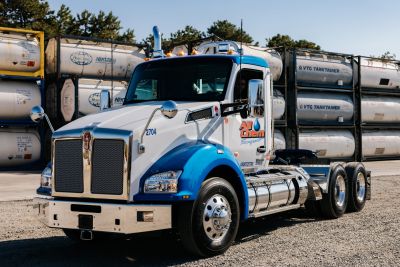
Tractors
(Commonly referred to as Truck. Day cab, Sleeper cab)
What is it? A tractor is used to haul a tank or ISO container to or from a set destination. A tractor is driven by a local or road driver.
As an eco-conscious business, all company trucks incorporate the CARB DEF method. It’s a progressive technology that recycles emissions from diesel burn to power the engine, capturing the exhaust with a fluid coupled with additional fuel that is then rerun through the engine. We’re capable of hauling products across the entire continental U.S. and parts of Canada, and our day-cab and sleeper tractors make these short and long haul trips possible for our truck drivers.
We own: Over 130 tractors.
Why use a tractor? To transport the chemicals stored in a tank or ISO container across the state or the country.
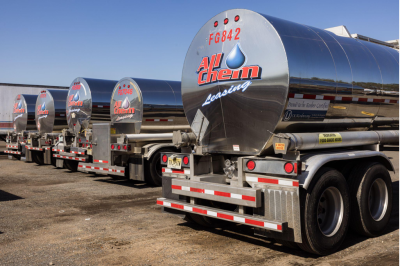
Tankers
(Commonly referred to as Tanker-Trailer, Tank Wagon and Domestic Tanker)
What is it? Tankers are designed to handle the unique challenges associated with transporting liquids, including the need for secure containment and stability during transit.
We own: Over 325 tankers.
Why use a tanker? To transport varying types of liquid products, include oils, chemicals and Kosher-certified materials.

ISO container chassis
(Commonly referred to as Container Chassis, Sea Container Chassis and ISO Chassis)
What is it? ISO containers are standardized shipping containers used for transporting goods via multiple modes of transportation, including ships, trains, and trucks. The chassis serves as the framework and support structure for securely carrying and transporting ISO containers.
We own: Over 140 ISO container chassis.
Why use an ISO container chassis? For Intermodal transportation, including ships, trains, and trucks. Delivery to distribution centers, short and long haul transport and container transfers.
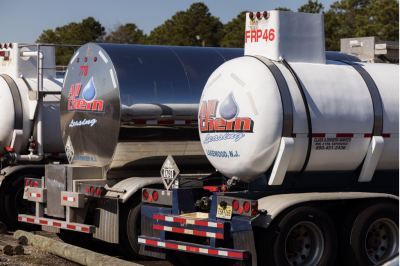
Fiberglass reinforced plastic trailers
(Commonly referred to as FRP)
What is it? Constructed using fiberglass, the FRP is known for its strength, durability, and lightweight properties.
Why FRP versus tanker? The choice between an FRP trailer and a tanker depends on the specific demands of the job, the nature of the cargo (including weight and corrosion), and any regulatory considerations.
We own: Over 35 FRP trailers.
Why use a Fiberglass reinforced plastic trailer? To transport corrosive materials, agricultural products and specialized materials for the military and utility companies.
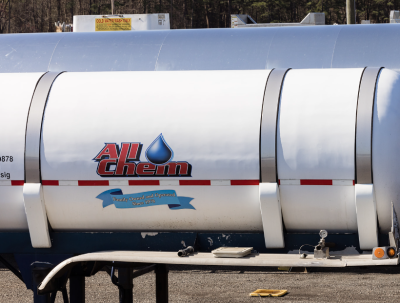
Polyethylene barrels with carbon fiber-reinforced plastic outer shells
(Commonly referred to as CFRP)
What is it? Polyethylene is a lightweight and durable thermoplastic known for its chemical resistance and ability to withstand a range of temperatures. Carbon fiber-reinforced plastic consists of carbon fibers embedded in a plastic matrix, resulting in a material that is lightweight and durable.
Why FRP versus CFRP? CFRP is often chosen for high-performance or specialized applications where weight reduction is a concern.
We own: 6 OMNI Tankers
Why use a Polyethylene barrel with carbon-fiber reinforced plastic outer shells? Besides the innovative technology of the CFRP, it’s utilized for chemical storage, hazardous waste and materials, agricultural chemicals, water treatment and purification and renewable energy storage and transport.
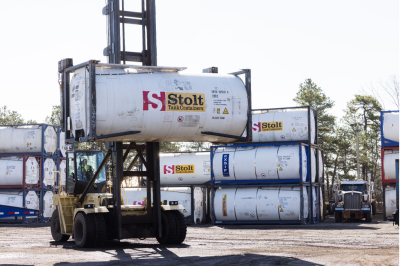
Container Lifts
(Commonly referred to as a container handler)
What is it? Container lifts are essential for lifting and moving containers efficiently during transportation, loading and unloading processes, and storage.
We own: 7 (4 loaded and 3 empty)
Why use a container lift? Loading and unloading shipping containers at ports, container and rail yards and terminals, container depots, military sites, and intermodal transportation, including ships, trains, and trucks.